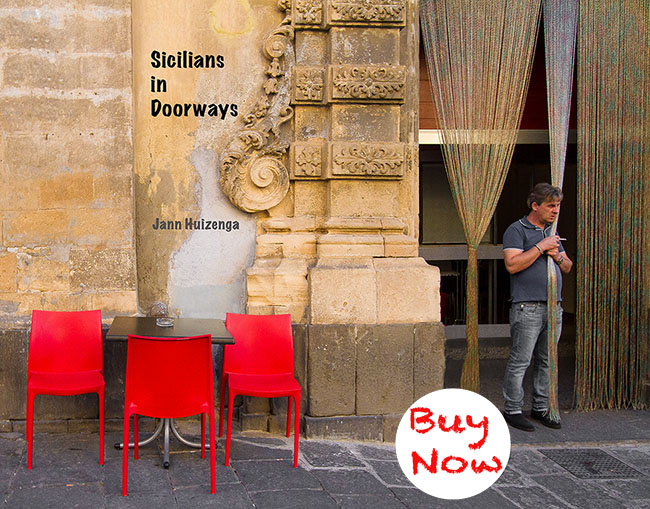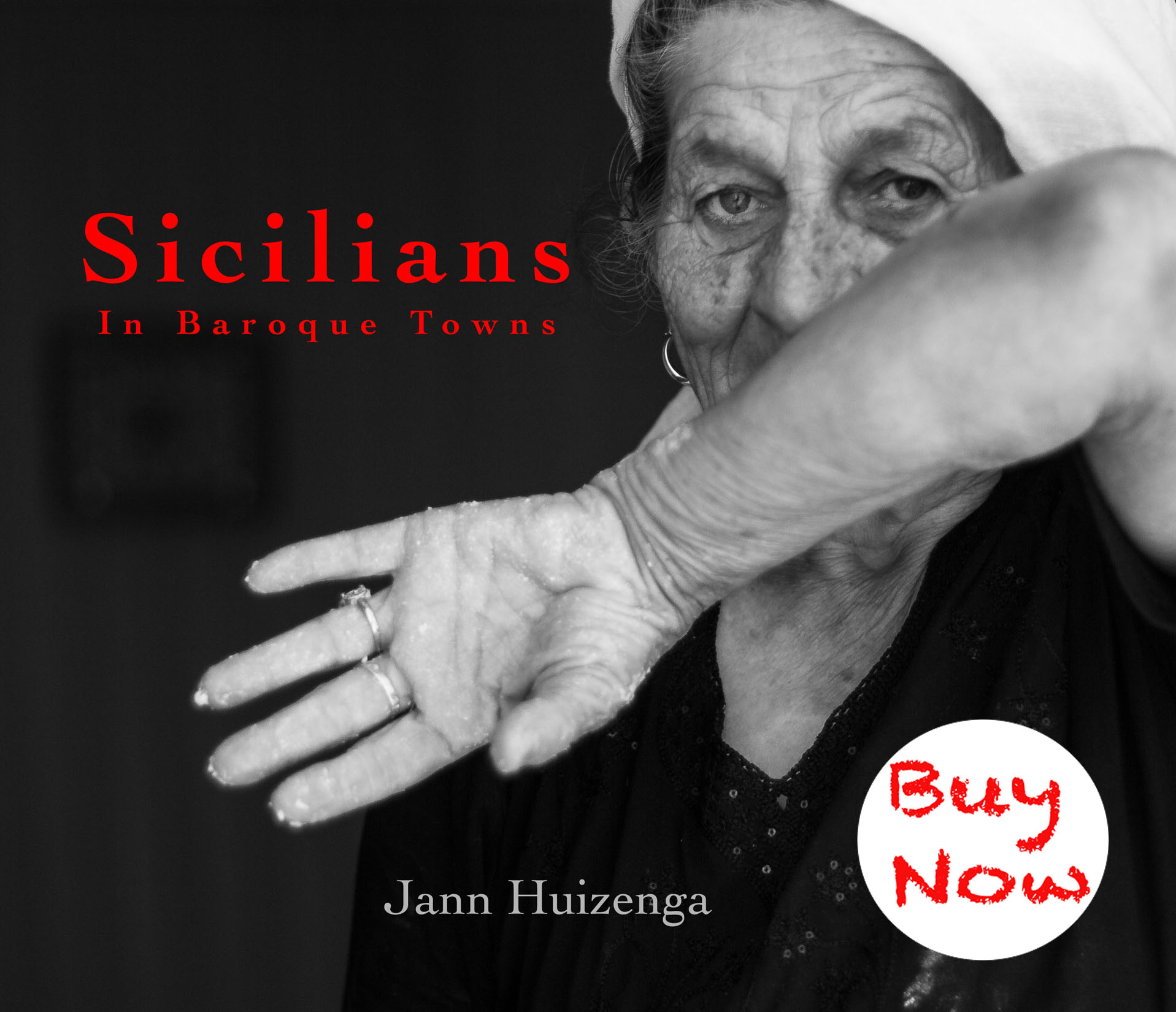December 5, 2011
Giuseppe is peering at the Gazzetta del Sud in the doorway of the circolo for war veterans in Monterosso Almo. He invites me in.
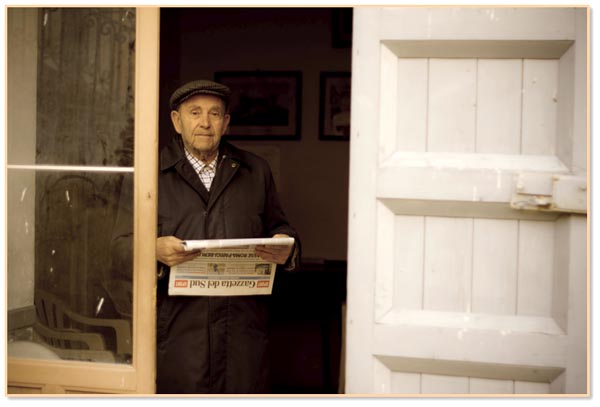
“Guess my age.”
The inevitable question asked by every Sicilian over the age of 70. “I don’t know, signore. Seventy?”
“Eighty-eight. I was a soldier in the Italian army in the Second World War. I was in prison in North Africa.”
I don’t ask him who imprisoned him. I think I know. George Patton during the North African campaign.
“For how long?”
“Six months.”
What do you say to someone who, almost 70 years after a war, is still haunted by it?
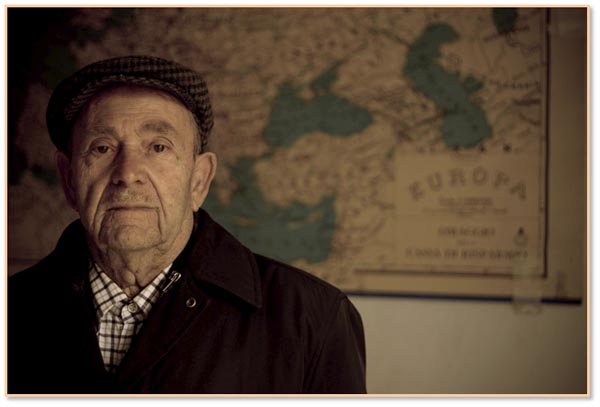
Giuseppe suddenly starts talking English.
“I learn English in prison, and later in England. A commander he take me to England. Then I come back in Sicily in 1945.”
Our conversation is interrupted by a new arrival. I say goodbye, so sorry there is no time to ask the many questions on my mind.
***
Click to subscribe to BaroqueSicily.
May 30, 2011
Like a bolt from the blue, the Madonna storms out of the skies on a mighty white stallion, sword at hand, slashing and slaying an army of Saracens.
Not your version of the Madonna?
Well, this is Sicily, where everything’s a little different.
The year is 1091. The place is Scicli, near Sicily’s southern coast.
 Madonna delle Milizie The Normans ruled Sicily at that time. Norman knights were battling Saracens and getting creamed. The Norman leader, Roger de Hauteville, prayed to the Madonna for help, and–miracle of miracles–she swooped down to save the day.
Almost a thousand years later, la Madonna delle Milizie is still revered and celebrated in this stony little baroque town. The entire 1091 event is re-enacted each year in late May.
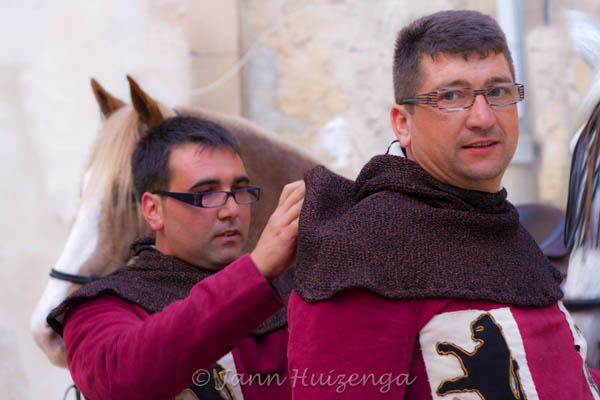 The Normans 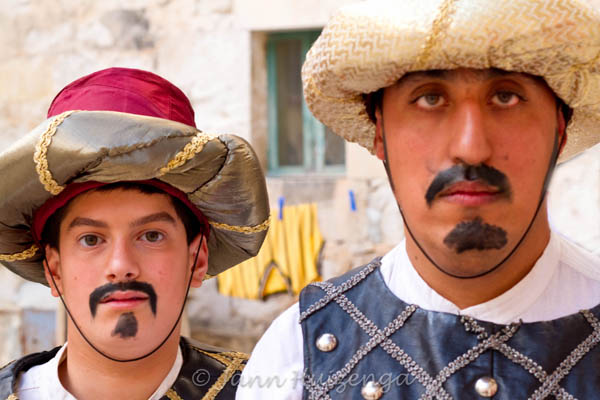 The Saracens What do the locals eat to celebrate the 1091 event?
Turkish heads.
That’s right. They feast on testa di turco, a large cream puff in the shape of a turban. Never mind that the Turks came nowhere near Sicily until the 16th century.
***
Click to subscribe to BaroqueSicily.
February 12, 2011
I found this menu outside a pub in Palazzolo Acreide in Sicily. I would not grace Pub dal Maestro with my presence even if my favorite chow were carne di cavallo (horse meat) and I were dog-hungry.
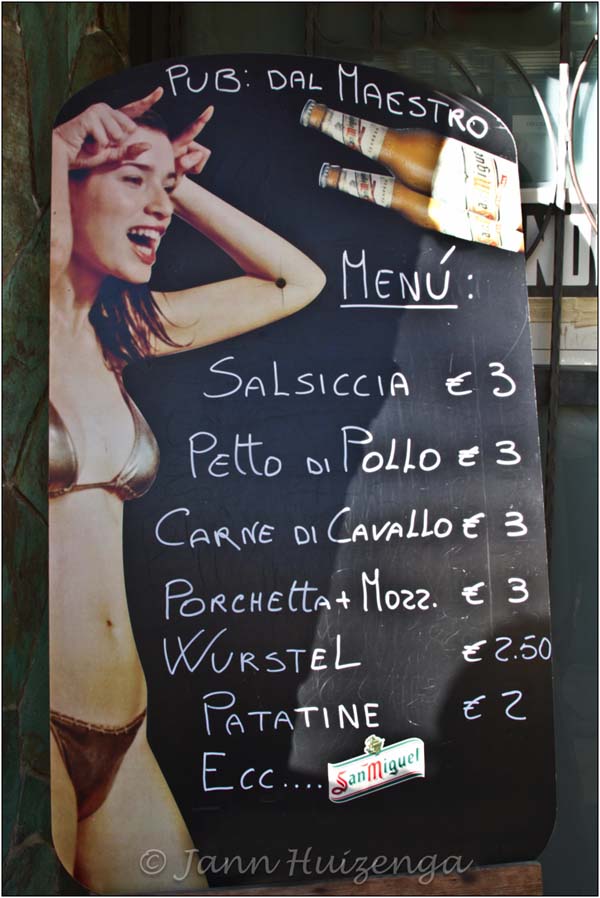
Maybe Italy’s emperor and his Italian TV empire relegate women to a “decorative role” in life, but that does NOT give some pub owner in the wilds of Sicily the right to exploit women to sell his horse and wurstel. Or does it?
Is this dewy-eyed nymphet making the cuckold sign? I hate to sound like a sourpuss, but why would she do that?
My Italian sisters are finally beginning to speak out. There’s going to be a nationwide protest by women tomorrow, February 13. You go, girls!
***
UPDATE: The main protest in Rome’s Piazza del Popolo was jammed with about 100,000 women. Click here for story.
Click to subscribe to BaroqueSicily.
September 17, 2010
“Can I take your picture?” I ask the phalanx of guys warming themselves in the sun.
“Sure,” says the baby-faced man in the foreground. “But hurry up. We’re all on our way to the cemetery.”
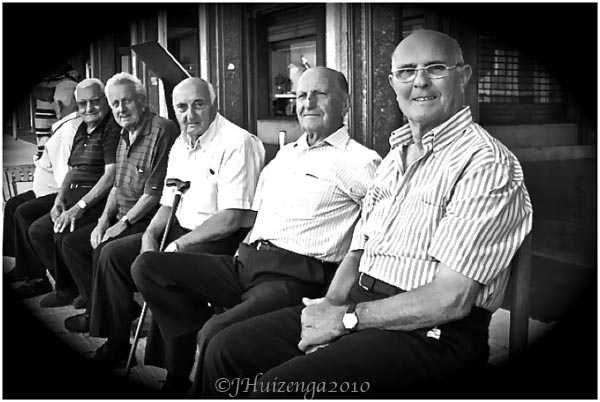
That’s Sicilians for you. Curious dark humor.
History’s to blame. Tyranny. Plague. War. Famine. Earthquake. Poverty. Excellent cadavers. Having survived all that, you’d be telling black jokes, too.
***
For some more black Sicilian humor, read Camilleri (if you like mysteries), or Pirandello’s “The Oil Jar and Other Stories” (see my review here), or see the wonderful (long) Taviani Brothers’ film Kaos (Chaos), based on four of Pirandello’s short stories. The village scenes in Kaos were filmed in my town!
***
Click to comment.
Click to subscribe.
June 6, 2010
“I know you,” said a tall man with olive eyes as we crossed paths last week.
I racked my brain. Had we met?
“We drink coffee at the same bar,” he laughed. “All stranieri, strangers, are famous here.”
I cringed.
“Do you know Louise from England?”
I shook my head.
He pointed to a low, crumbling building adjacent to the cathedral and pulled out a ring of keys. “The church is trying to sell this building. Do you want to see inside?”
The two dank rooms inside were pigeon-pooped and depressing, but I saw two old chairs I liked in a pile of junk.

“I gift them to you, Signora.”
I politely protested.
“But they’re worthless!” he said.
Old Sicilian church chairs—seats lovingly caned with a thick, rough twine—have been replaced by pews.
Heading up the stairs to my house, a salvaged chair under each arm, I felt another rush of Sicily-love.
There was also regret. Why had he let them go so lightly?
***
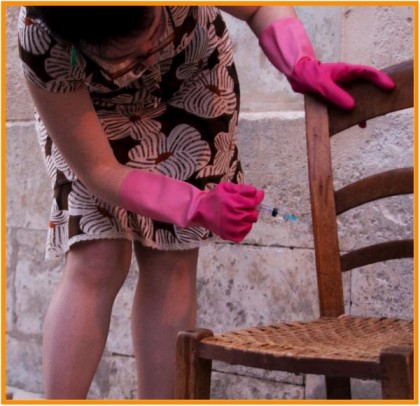
ADDENDUM: It’s true that the little church chairs were riddled with wood-munching bugs—tarli, as they’re called here. But there’s a simple solution. My friend Roberta (left) taught me the antitarlo recipe: Buy a syringe at a farmacia, don pink plastic gloves, fill the syringe with toxic goo, plunge it into each and every pinhole (there were millions), then wrap the chair, Christo-like, in plastic and let rest for 2 weeks. Unwrap and enjoy with a glass of Nero d’Avola.
Click to leave a comment.
Click to subscribe.
|
Subscribe to Baroque Sicily
Copyright reserved -
All photos and text on BaroqueSicily are Copyright of Jann Huizenga ©2009-2015, unless otherwise noted. Material may not be copied or re-published without written permission. All rights reserved.
|









